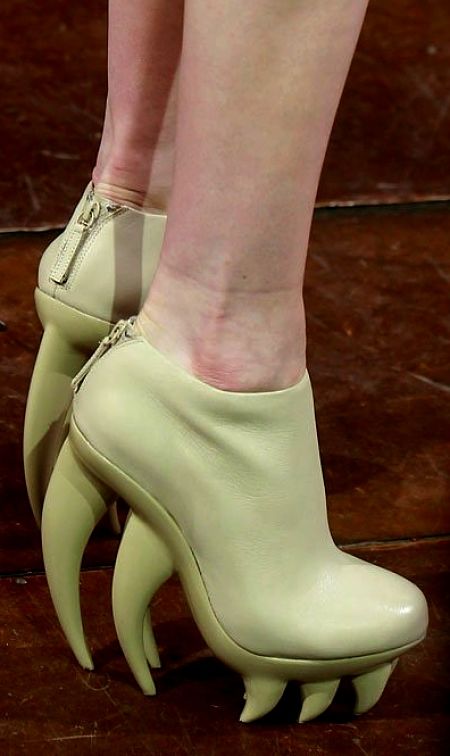Wearing High Heels Changes the Way Women Walk and Risks Injury
How shoes affect human gait, and the functioning of the legs and feet, is a very controversial discussion point these days. The jury is still out on whether barefoot running, for example is better for your feet or worse. Wearing shoes when running changes the stride and gait.
Many barefoot runners claim that removing the shoes and reversion to 'natural running styles' is beneficial and leads to improved athletic performance. Related to this is the issue of how high heels affect walking.
Despite the popularity of high heel shoes, there has been very little scientific research on how high heels affect the way people walk. Does wearing high heels cause permanent changes, even when the high heels are taken off? What are the implications of any changes in walking caused by wearing high heels?







High heels can cause a number of foot problems. Similarly, back and leg pain, strain and fatigue are common problems for those who wear high heels.
The shift of the foot into a more downward orientation when wearing high heels, puts increased force onto the bottom (plantar) of the front part of the foot and to the toes.
The pressure rises as the height of the shoe heel increases and can double with very high heels. This increased pressure can cause pain and a number of foot deformities such as hammer toes, claw toes and bunions. The feet may also be turned to the outside.
The narrow, pointed toe box, that is common on many high heel shoes also causes corns, calluses and blisters and damage to the toes. This adds to the effects produced by the downward orientation of the foot.
However, does wearing high heels cause changes in the way that people walk? In order to test this, Australian scientists recently examined the feet of 9 young women who commonly wore high heels for a minimum of 40 hours a week over a 2 year period.
A control group of 10 young women who rarely, if ever, wore heels were recruited. The young women in both groups ranged from teenagers to 30 years of age.
The scientists fitted both groups of women with reflective markers to capture motion on video equipment and electrodes to track leg-muscle activity. Ultrasound probes were used to measured the length of muscle fibers in the legs of the two groups of women.
Then the women were asked to stride several times along a walkway about 26 ft long (8 metres). The walkway was fitted with a plate to measure the forces produced as they walked. The control group walked along the walkway 10 times while wearing no shoes.
The other women completed the same exercises barefoot and repeated the walks 10 times wearing their chosen high heel shoes.
As expected, the regular high heel users walked differently from those who did not wear them very often.
This difference was obvious, even when the heel wearers went barefoot. The changes in walking were permanent and sustained.
But the extent and range of the differences were surprising.
The major changes between the
two groups were:
- The downward position of the foot in high heels means that wearers are unable to push off the ground with as much force from the heel and develop other ways of walking.
- The heel wearers walked with shorter length and more emphatic strides than the control group
- The feet of heel wearers were permanently in a constrained, toes-pointed, downward facing position.
- The muscle fibers in the calf muscles of heel walkers had shortened
- There was increased mechanical strain on the calf muscles.
- When the heel wearers walked they mostly used their muscles, whereas the control group walked by flexing their tendons, especially the Achilles tendon.
The differences were significant. The most muscle-tendon efficiency when walking occurs when the tendon lengthens while the muscle remains the same length. Flexing in the tendon when it lengthens, stores elastic energy which is later used to push the foot off the ground. This is a very efficient way of walking as the tendons are acting as springs.
The heel wearers walk much less efficiently, by not using their tendons. Instead they stretch and strain their already shortened calf muscles. This requires more energy when walking and causes muscle fatigue.
This action is also more likely to lead to strain injuries. This add to the other risks of sprained ankles and pulled muscles cause by feet slipping off high heels.
Conclusion
The researchers recommended that women only wear high heels “once or twice a week,” to avoid the permanent change in the way people walk. This may mean carrying a spare set of flats and swapping regularly. If this is not possible the researchers recommended that people should try to regularly remove the heels such as when sitting down, such as at a desk.